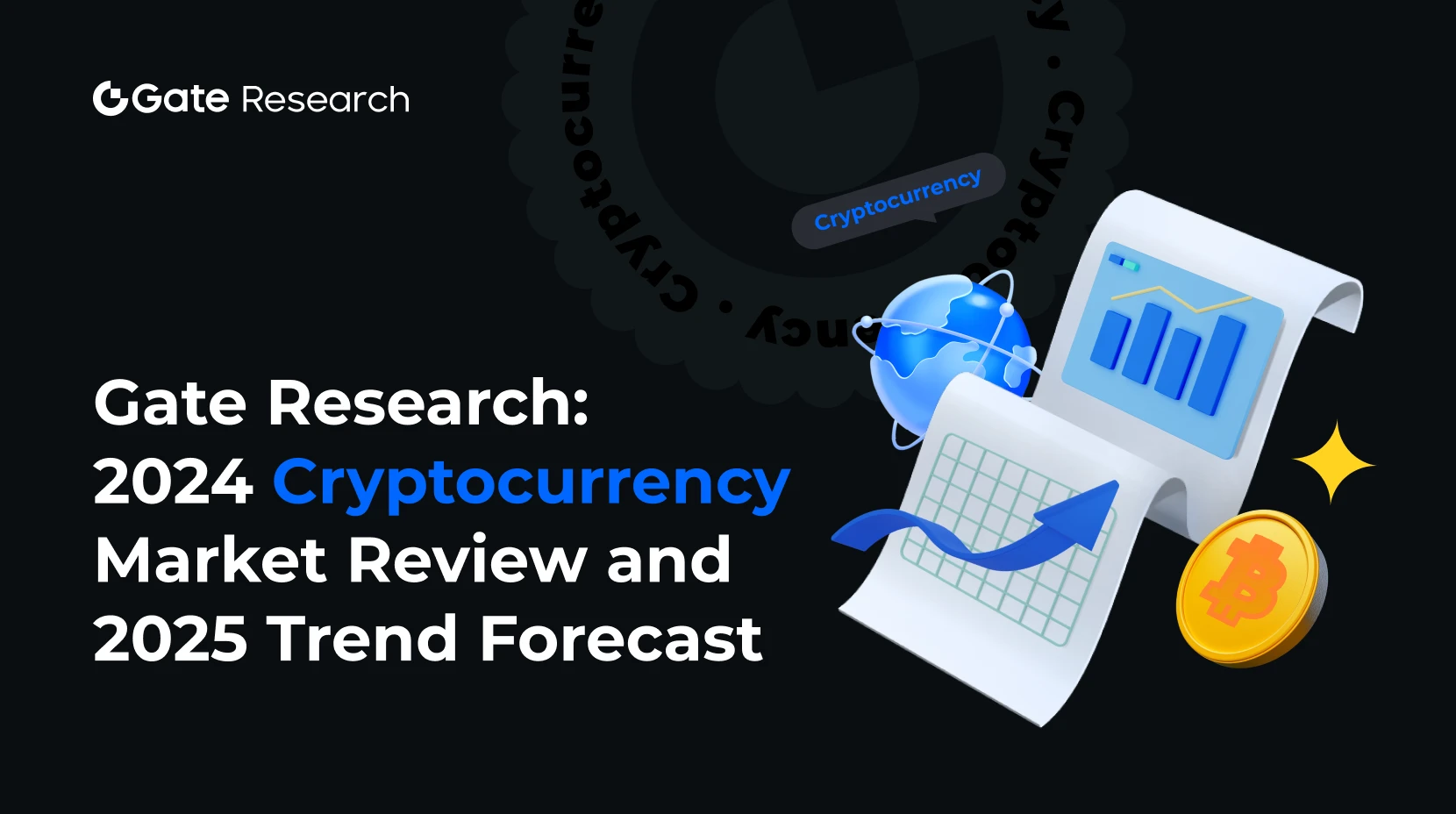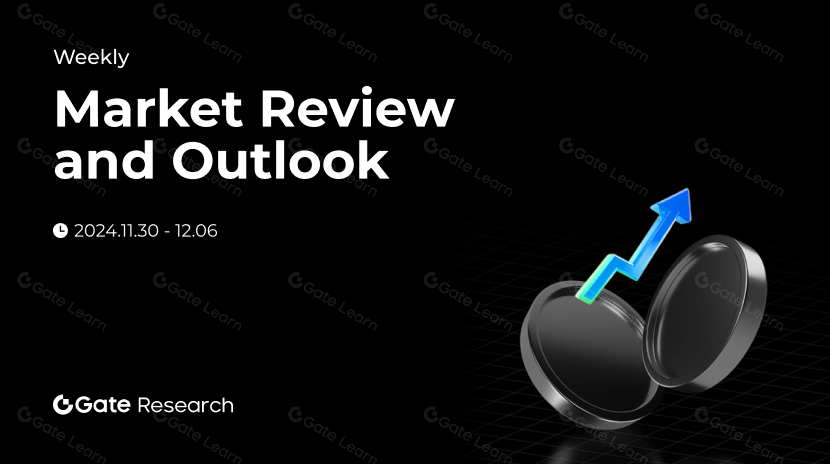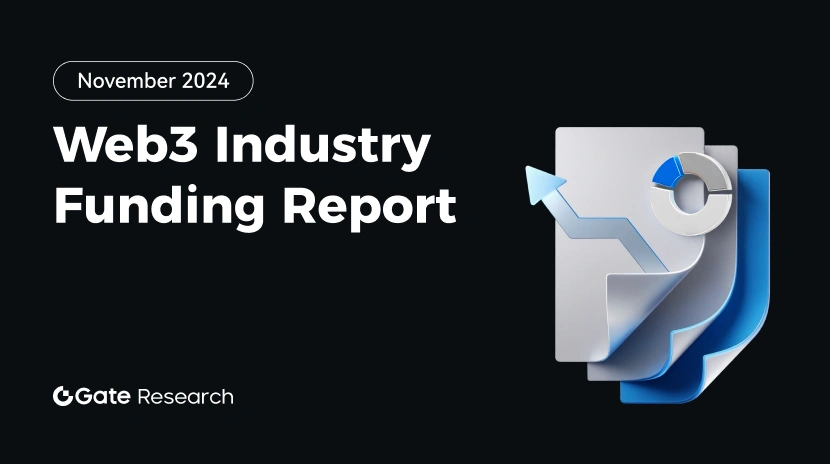Исследование Gate: Отчет по политике и макроэкономике Web3 (18 – 24 апреля 2025 года)
Предисловие
На этой неделе в индустрии Web3 произошло несколько важных событий как на фронтах политики, так и макроэкономики. С точки зрения экономических данных, предварительные результаты апреля по индексу PMI по состоянию дел в США от Markit показали разнонаправленный прогноз. Индекс деловой активности в производственном секторе неожиданно вырос до 50,7, что свидетельствует о расширении и значительно лучше ожиданий рынка о сокращении. Предварительный индекс потребительского доверия Еврозоны за апрель составил -16,7, что ниже ожидания рынка в -15,6 и ниже на 2,2% по сравнению с мартовским -14,5. Это самый низкий уровень с ноября 2023 года.
На фоне экономической политики президент США Трамп заявил публично, что он "существенно снизит" текущие 145% тарифы на Китай. Это заявление значительно смягчило опасения рынка. Министр финансов Басент также подчеркнул на закрытом совещании, что текущий торговый тупик "несостоятелен" и что "ожидается деэскалация в ближайшем будущем".
Что касается глобального регулирования криптовалют, Банк Кореи (BOK) будет активно продвигать законодательство о регулировании стейблкоинов. Начиная со второй половины 2025 года, поставщики услуг виртуальных активов (VASP) должны будут регистрироваться перед проведением трансграничных транзакций со стейблкоинами и ежемесячно сообщать сведения о транзакциях в Банк Кореи. JD Group объявила, что ее проект стейблкоинов официально вступил в фазу «песочницы» Управления денежного обращения Гонконга, став одной из немногих крупных технологических компаний из материкового Китая, которые активно участвуют в исследовании соответствия стейблкоинов.
Абстрактный
- 18 апреля — Министерство финансов Словении предложило проект о взимании налога в размере 25% на криптотранзакции.
- 22 апреляБанк Кореи будет продвигать законодательство о регулировании стейблкоинов и устанавливать комплексную систему соблюдения требований.
- 22 апреля — Предварительный индекс потребительского доверия в еврозоне в апреле снизился до -16,7, что ниже ожидаемого.
- 23 апреляТорговые напряжения между США и Китаем смягчились после заявления президента Трампа о том, что он "существенно снизит" таможенную пошлину в 145% на Китай.
- 23 апреля — Индекс деловой активности в сфере услуг США по Маркиту в апреле достиг 16-месячного минимума, в то время как данные по производству превзошли ожидания.
- 23 апреляПроект стейблкоина JD перешел в фазу тестирования в "песочнице" в Гонконге.
Ключевые события
18 апреля — Министерство финансов Словении предлагает проект налога на транзакции криптовалют в размере 25%
17 апреля 2025 года Министерство финансов Словении опубликовало новый проект налогового предложения, направленное на введение 25% налога на резидентов при конвертации криптовалют в фиатную валюту или использовании их для покупки товаров и услуг. Проект в настоящее время открыт для публичного обсуждения, которое продлится до 5 мая. При утверждении, ожидается, что закон вступит в силу с 1 января 2026 года.
Согласно заявлению министерства, предлагаемый налог не будет применяться к обмену криптовалюты на криптовалюту или к переводам между кошельками, принадлежащими одному и тому же лицу. Налоговая база будет рассчитываться на основе разницы между ценами покупки и продажи. Налогоплательщикам будет требоваться вести учет всех транзакций и докладывать свой доход во время ежегодной подачи налоговой отчетности. Министр финансов Клемен Бостянчич заявил, что нынешний налоговый освобожденный статус для отдельных криптотранзакций "неразумен", подчеркивая, что "как один из самых спекулятивных финансовых инструментов, криптоактивы не должны быть исключены из налоговой системы".
Введение этого налогового проекта сигнализирует о ускорении Словении в интеграции криптовалют в свою налоговую систему. Четкое классифицирование вывода наличных и потребления как облагаемых событий позволит министерству включить криптовалютные активы в фискальный контроль и сократить пространство для "серого рынка". Если новый закон будет принят по плану в 2026 году, Словения откажется от своей текущей льготной 10% налоговой системы и займет более жесткое положение среди систем налогообложения криптовалют в ЕС. Этот шаг также подчеркивает постоянные усилия страны по созданию более полной структуры управления цифровыми активами впоследствии ее выпуска цифровых суверенных облигаций.
22 апреля — Банк Кореи намерен усилить регулирование стейблкоинов и создать комплексную систему соблюдения требований
Банк Кореи (БК) намерен активно продвигать законодательство по регулированию стейблкоинов. С начала второй половины 2025 года провайдерам услуг виртуальных активов (VASP) будет требоваться регистрация перед проведением трансграничных операций со стейблкоинами и ежемесячное предоставление деталей транзакций в БК. Эта инициатива направлена на борьбу с незаконными финансовыми операциями, такими как отмывание денег и уклонение от уплаты налогов, особенно учитывая то, что стейблкоины, привязанные к доллару США, такие как Tether, все чаще используются для трансграничных платежей.
Согласно данным Корейской таможни, с 2020 по июль 2023 года нарушения в области валютного обмена, связанные с виртуальными активами, составили 81,3% от общего числа нарушений и составили около 9 триллионов вон (6,4 миллиарда долларов). В ответ на это правительство Южной Кореи планирует пересмотреть Закон о валютных операциях в первой половине 2025 года, формально классифицируя виртуальные активы как третью категорию торговых инструментов. В рамках новой структуры соответствующим организациям потребуется предварительная регистрация и регулярная отчетность по информации о сделках в БОК, включая даты сделок, суммы, типы активов и личности обеих сторон, участвующих в сделке.
Параллельно с этим Банк Кореи активно продвигает свою программу пилотного проекта цифровой валюты Центрального банка (ЦВЦБ). Инициатива приглашает к участию широкую публику, розничных продавцов и местные банки для оценки коммерческой жизнеспособности ЦВЦБ в реальных сценариях. Этот шаг соответствует более общей стратегии страны по укреплению надзора за стейблкоинами, отражая обязательства Кореи по достижению баланса между безопасностью и инновациями в секторе цифровых финансов.
Построив четкий регулятивный каркас, Южная Корея стремится улучшить прозрачность рынка и доверие пользователей, заложив прочный фундамент для соблюдения и устойчивого развития криптовалютных активов.
22 апреля — Доверие потребителей в еврозоне в апреле снизилось до -16,7 в апреле, не оправдав ожидания
Согласно предварительным оценкам Европейской комиссии, индекс потребительского доверия Еврозоны упал второй месяц подряд, снизившись до -16,7 в апреле — на 2,2% ниже, чем в марте, и ниже рыночных ожиданий в -15. Это самый низкий уровень, зафиксированный с ноября 2023 года. Нисходящий тренд может быть обусловлен несколькими факторами, включая постоянное давление инфляции, разрушающее покупательскую способность домашних хозяйств, опасения из-за замедления в производстве, распространяющегося на сферу услуг, и геополитические напряжения, нарушающие энергетические рынки.
Текущие данные свидетельствуют о том, что потребители становятся более осторожными в своих расходах, что может подавить рост спроса и создать дополнительное давление на региональное экономическое развитие. В этой ситуации Европейский центральный банк (ЕЦБ) стоит перед задачей находить баланс между контролем инфляции и поощрением экономической жизненности. Рынки внимательно следят за тем, будет ли ЕЦБ корректировать свою денежно-кредитную политику в ответ на эти потенциальные вызовы, сохраняя свою цель по стабильности цен в среднесрочной перспективе.
23 апреля — Напряженность в торговле между США и Китаем снижается после того, как Трамп объявил о планах существенного снижения пошлин
23 апреля президент США Трамп публично объявил о планах "существенного снижения" текущих тарифов в размере 145%, введенных на Китай. Министр финансов США Бейсент также заявил на закрытом совещании, что текущая торговая тупиковая ситуация "несостоятельна" и сигнализировал, что "решение может прийти в ближайшем будущем". Это заявление увеличило доверие рынка к глобальным перспективам экономики, вызвав восходящее движение на американских фондовых рынках. S&P 500 вырос на 2,5%, а Nasdaq прибавил 2,7%. Цены на биткойн взлетели выше отметки в $93,000, установив новый рекорд с марта, в то время как золото снизилось на 1% с исторического максимума $3,500, указывая на сдвиг от безрисковых активов к рисковым активам.
Сигналы администрации Трампа о снижении тарифов подняли краткосрочное рыночное настроение. Если тарифные корректировки пройдут как ожидалось, глобальный ралли на рынке, скорее всего, продолжится. Однако в долгосрочной перспективе остается неопределенность в свете неясных перспектив сокращения ставок ФРС. США могут преследовать более целенаправленные технологические санкции или селективные тарифные меры. Это, вероятно, ускорит стратегии диверсификации цепочек поставок, побудив компании переносить производственные мощности к Юго-Восточной Азии, Мексике и другим регионам для смягчения политических рисков.
Если в будущем монетарное смягчение и улучшение торговли сойдутся, это может дополнительно поддержать рынок. Тем не менее, волатильность цен на активы может сохраниться из-за колебаний ожиданий сокращения ставок и текущих геополитических напряженностей.【4】
23 апреля — индекс деловой активности в сфере производства США снижается до 16-месячного минимума, производство превышает ожидания
Предварительные данные, опубликованные 23 апреля, показали разнонаправленную картину в апрельском индексе деловой активности Markit в США. Индекс деловой активности в производственном секторе неожиданно возрос до 50,7, входя в зону экспансии и значительно превысив ожидания рынка о сокращении. Тем временем, индекс деловой активности в сфере услуг (51,1) и композитный индекс деловой активности (50,9) оказались ниже ожиданий, при этом композитный индекс достиг своего минимального уровня с декабря 2022 года. Однако оба показателя остались выше порога в 50, что свидетельствует о том, что общая экономическая активность продолжает умеренно расширяться.
Последние данные по PMI подчеркивают структурное расхождение внутри экономики США — производство расширяется вопреки тенденции, обусловленной восстановлением цепочек поставок и увеличением капитальных затрат, в то время как динамика в сфере услуг ослабевает, тормозя общее деловое настроение. Этот контраст может отражать временное изменение спроса потребителей с услуг на товары. Это также сигнализирует о том, что политики в будущем могут потребоваться найти баланс между оживлением сферы услуг и управлением инфляционными давлениями.
23 апреля — стейблкоин JD входит в регуляторную песочницу Гонконга для тестирования
Группа JD объявила, что ее проект стейблкоина официально вошел в программу регулирования песочницы, управляемую Гонконгским монетарным учреждением (HKMA). Это может стать первой попыткой входа активов, основанных на юане, в мировую финансовую систему через соблюдающую стандарты модель стейблкоина, что делает JD одной из немногих крупных китайских технологических фирм, активно изучающих вопросы соблюдения стандартов стейблкоинов.
Гонконг в настоящее время находится на переломном этапе в законотворчестве о регулировании стейблкоинов, причем окончательные рамки все еще находятся в разработке. Вступление JD в песочницу в это время представляет собой стратегический шаг для получения преимущества первым рыночным игроком до того, как будут окончательно утверждены регуляторные детали. Механизм песочницы позволяет компаниям проводить инновационные испытания в регулируемой среде, и участие JD отражает его намерение продвигать финтех-решения на основе соблюдения правил в первую очередь.
Участие JD в песочнице Гонконга и его стремление к соблюдению проекта стабильной криптовалюты означает первое вторжение китайского предприятия в регулируемое пространство стабильных криптовалют. Это предоставляет потенциальную модель для внедрения систем стабильных криптовалют, не привязанных к доллару США, и прокладывает путь для соблюдения инфраструктуры в Азиатско-Тихоокеанском регионе. Поскольку Гонконг готовится к запуску формальных правил стабильных криптовалют, эта инициатива может ускорить развитие региональной экосистемы соблюдения, улучшить пересечение капиталов и модернизировать цифровую платежную инфраструктуру региона. Она также может стать ключевым компонентом в будущих международных валютных коридорах.
Сводка
На этой неделе сектор Web3 продемонстрировал разнонаправленные тенденции в макроэкономических условиях и изменениях в регулировании. В Европе индекс потребительского доверия еврозоны снижается второй месяц подряд, упав до -16,7 в апреле, что на 2,2% меньше, чем в марте, и ниже ожиданий рынка в -15. Это самый низкий уровень с ноября 2023 года. Между тем, Министерство финансов Словении опубликовало новый проект налогового предложения, который вводит налог в размере 25% для резидентов при конвертации криптовалюты в фиатную валюту или использовании ее для покупки товаров и услуг. В Азии Банк Кореи объявил о планах по продвижению законодательства о регулировании стейблкоинов, стремясь создать всеобъемлющую систему соответствия. JD Group также сообщила, что ее проект стейблкоинов официально вошел в регулятивную песочницу Управления денежного обращения Гонконга, что делает ее одной из немногих крупных технологических фирм из материкового Китая, активно изучающих соответствие стейблкоинам.
В США индекс деловой активности в производственном секторе неожиданно вырос до 50,7, выйдя на территорию расширения и значительно превзойдя ожидания рынка о сокращении. Это свидетельствует о продолжающемся умеренном росте экономической активности. Кроме того, президент Трамп публично заявил, что он «существенно снизит» нынешние 145-процентные тарифы в отношении Китая. Министр финансов Басент также отметил на закрытом заседании, что продолжающийся торговый тупик является «неустойчивым», предполагая потенциальную деэскалацию в ближайшем будущем.
В целом, смягченная позиция Трампа по тарифам вызвала заметное восстановление криптовалютных активов. Биткоин преодолел отметку в $93,000 на этой неделе, достигнув самого высокого уровня с марта 2025 года. Однако этот резкий ралли может уже включать в себя большую часть ожидаемого смягчения политики. Вместе с геополитической неопределенностью и неясными перспективами по снижению ставок Федеральной резервной системы, инвесторам рекомендуется сохранять осторожную стратегию распределения активов и оставаться бдительными перед потенциальной рыночной волатильностью.
Ссылки:
- Cointelegraph, https://cointelegraph.com/news/slovenia-finance-ministry-floats-25-tax-on-crypto
- Блок, https://www.theblock.co/post/351351/south-koreas-central-bank-vows-active-stablecoin-legislation-development?utm_source=twitter&utm_medium=social
- Gate.com, https://www.Gate.com/zh/upcoming-event/economic-data/7396
- CNN, https://www.cnn.com/2025/04/22/business/trump-china-trade-war-reduction-hnk-intl/index.html
- Торговая экономика, https://tradingeconomics.com/united-states/manufacturing-pmi/news/456100
- NBD, https://www.nbd.com.cn/articles/2025-04-22/3842528.html
Исследование Gate
Исследовательский отдел Gate - это всесторонняя платформа для исследования блокчейна и криптовалют, которая предоставляет читателям глубокий контент, включая технический анализ, актуальные идеи, обзоры рынка, исследования отрасли, прогнозы трендов и анализ макроэкономической политики.
Нажмите на Ссылкаузнать больше
Отказ от ответственности
Содержание этой статьи включает ссылки из нескольких источников, таких как The Block, CNN и NBD. Если у вас есть какие-либо вопросы или возражения, пожалуйста, свяжитесь с командой Gate Learn, и они незамедлительно решат проблему. Инвестирование на криптовалютном рынке связано с высокими рисками. Пользователям рекомендуется проводить независимое исследование и полностью понимать характер активов и продуктов перед принятием любых инвестиционных решений. Gate.com не несет ответственности за любые убытки или ущерб, возникшие в результате таких инвестиционных решений.
Похожие статьи

Исследование Gate: Обзор рынка криптовалют на 2024 год и прогноз трендов на 2025 год

Исследование Gate: биткойн возвращается после преодоления отметки в $70 000, транзакции в блокчейне Solana опережают Ethereum

Исследование Gate: BTC превышает рубеж в 100 000 долларов, объем торгов криптовалютой в ноябре впервые превышает отметку в 10 триллионов долларов

Исследование Gate: отчет о финансировании отрасли Web3 - ноябрь 2024

Исследование gate: политическая нестабильность в Южной Корее вызывает волатильность на рынке, TRX вырос на 70% за один день


